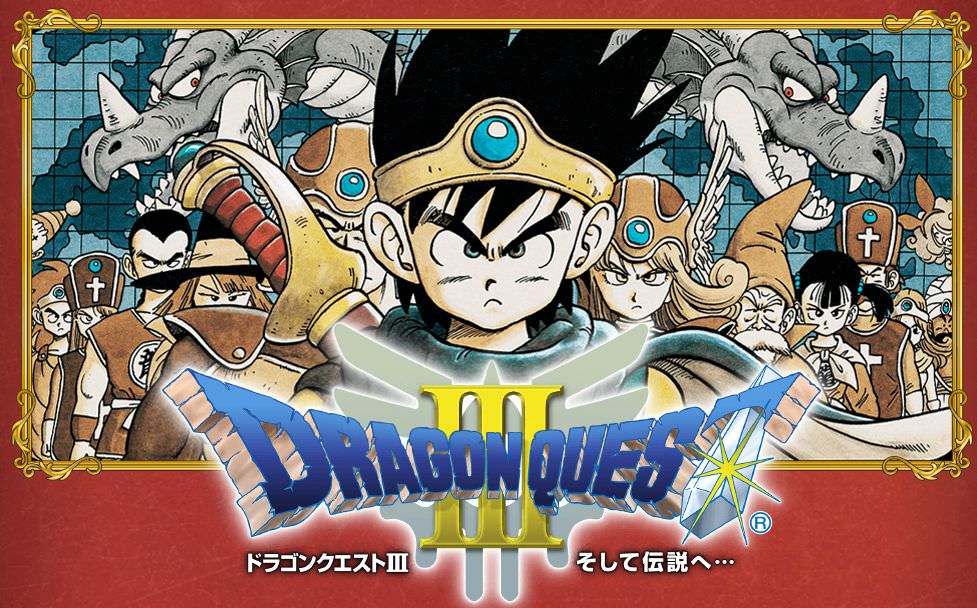
Today is the 30th anniversary of Dragon Quest III’s Japanese release. DQIII cemented the series as a cultural touchstone and something more than a fad. Lines snaked around blocks, kids played truant and the game became a national talking point.
On the whole, the Dragon Quest series is very iterative. Each successive game builds on the strengths of its predecessor while refining other rougher elements and introducing new gameplay tweaks.
The third Dragon Quest built on the second game’s greater emphasis on storytelling. It also carried over the second game’s multiple party members and larger world map. Some of Dragon Quest’s Wizardry influence comes through as well – you enlist party members from the pub and, like Wizardry, your traveling companions lack distinct personalities. You name ’em and pick their class, but that’s the extent of their character.
Thankfully, the classes themselves have a lot of personality and Akira Toriyama’s art and designs are particularly cute and vibrant in this entry. It does a lot of the heavy lifting and helps to breathe some life into your created party of adventurers. This approach may not suit everyone, but all of the other elements of DQIII are so well put together, that most players will be able to look past it.
Moreover, Dragon Quest IV, released two years and a day later on February 11, 1990, would directly answer these concerns by pushing party members’ personalities to the forefront of the adventure.
Back to Dragon Quest III, there’s a lot that makes this game special. The scenario is denser than the previous games in the series, it plays both as a fitting end to a trilogy for series veterans and a fine entry point for new players alike. There’s fun to be had in globe trotting around the world map which is a strange version of Earth. Look hard enough and you can find your house!
In a conversation with Shigeru Miyamoto, Dragon Quest creator Yuji Horii explains that with Dragon Quest III the DQ formula was perfected. This holds true, for the most part, as you can see Dragon Quest III’s influence throughout the series right up unto the newest entry, Dragon Quest XI. It makes nods to the entire series but especially Dragon Quest III.
Dragon Quest III is still a fan favourite among the other strong entries in what is a solidly consistent and always high quality series. Last year, Famitsu asked readers to choose the best game of all time for the magazine’s 1500th issue. Dragon Quest III came in second. In a 2006 poll, the magazine’s readers voted the game the third best of all time.
Today, Twitter is full of memories, fan art, cosplay and videos of Dragon Quest III. Social media is the new water cooler, playground, or magazine letters page where people can share their feelings on the game and wax nostalgic about the good times they spent hunting coloured orbs and grinding on slimes.
It’s enough to make a person feel left out in the cold. Luckily for any latecomers out there, DQIII is easy to track down.
DQIII is readily played today thanks to various remakes and ports of the game to many different systems. Super Famicom, Gameboy Color, feature phones, smartphones, and many other platforms have fine versions of DQIII complete with improvements and refinements. You can even buy Dragon Quest III for the 3DS and PS4 as part of a tie-in promotion with Dragon Quest XI.
Dragon Quest III is as impactful and important not only as it relates to Dragon Quest but in how it relates to other RPGs and video games in general. It’s an essential game so why not dust off that cartridge or go to the App Store and play some Dragon Quest III today!




